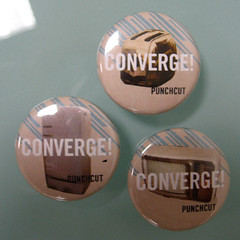Mobile marketers have a few kinks to iron out before they reach the delicate symbiosis between the marketer and the marketplace.
Burger King has announced a new mobile game. Users can play for a monthly fee of $2.99 — about the price of fries and a Coke.
So, there are two sides to put the mayo in dissecting Burger King’s rationale here.
First, let’s say the target user is a Burger King fan. She likes the kitschy enamel King from the TV ads as much as she likes BK’s juicy flame-broiled taste. But, is she enough of a fan to pay $2.99 a month to play the Burger King game on her handset?
From another angle, let’s say the target user is just a really avid casual gamer. But, of the games she could select, is she attracted to branded games of this nature; games where you have to “remember how to make a Whopper” and have to “squirt ketchup through the air while navigating through a BK restaurant?”
The jury is out on this one for me. I know we’ll continue to see experimentation with co-branded marketing campaigns, banner ads, branded content, “pay walls”, etc. I just wasn’t prepared for someone to suggest that users would like to pay recurring monthly fees for branded experiences; especially coming out of the fast food category.
Read the Press Release
Add this to digg, del.icio.us, etc.
 Convergence is sometimes viewed as the consolidation of multiple technologies towards a singular über-device. I prefer to view convergence as the tendency of technologies, as they grow in complexity and scope, to overlap and consolidate functions. Convergence is a trend wherein devices and functions take on commonly shared traits, but this doesn’t mean that this trend ultimately ends with a single, multi-functional mega-device, no matter how cool and ‘mad scientist’ that might sound. Product mobility, technical innovation, component obsolescence, and proprietary ownership of certain functions are among the many forces that will ensure we continue to interact with ecosystems of related and overlapping devices rather than a single device with every function built in.
Convergence is sometimes viewed as the consolidation of multiple technologies towards a singular über-device. I prefer to view convergence as the tendency of technologies, as they grow in complexity and scope, to overlap and consolidate functions. Convergence is a trend wherein devices and functions take on commonly shared traits, but this doesn’t mean that this trend ultimately ends with a single, multi-functional mega-device, no matter how cool and ‘mad scientist’ that might sound. Product mobility, technical innovation, component obsolescence, and proprietary ownership of certain functions are among the many forces that will ensure we continue to interact with ecosystems of related and overlapping devices rather than a single device with every function built in.
But, convergence as a concept illustrates how interaction design for devices is changing. As our devices advance, they are often consolidating functions previously reserved for separate devices. Examples of this can be seen in most modern devices, from mobile phones (which serve as PDAs, calculators, mini-computers, and portable game consoles as well as communication devices) to Media Center PCs (which serve as DVR, stereo music player, and digital picture frame as well as a standard personal computer).
With all this in mind, I’m offering up 7 considerations to use when designing interactions for converged devices.
Continue Reading »
Add this to digg, del.icio.us, etc.

 Convergence is sometimes viewed as the consolidation of multiple technologies towards a singular über-device. I prefer to view convergence as the tendency of technologies, as they grow in complexity and scope, to overlap and consolidate functions. Convergence is a trend wherein devices and functions take on commonly shared traits, but this doesn’t mean that this trend ultimately ends with a single, multi-functional mega-device, no matter how cool and ‘mad scientist’ that might sound. Product mobility, technical innovation, component obsolescence, and proprietary ownership of certain functions are among the many forces that will ensure we continue to interact with ecosystems of related and overlapping devices rather than a single device with every function built in.
Convergence is sometimes viewed as the consolidation of multiple technologies towards a singular über-device. I prefer to view convergence as the tendency of technologies, as they grow in complexity and scope, to overlap and consolidate functions. Convergence is a trend wherein devices and functions take on commonly shared traits, but this doesn’t mean that this trend ultimately ends with a single, multi-functional mega-device, no matter how cool and ‘mad scientist’ that might sound. Product mobility, technical innovation, component obsolescence, and proprietary ownership of certain functions are among the many forces that will ensure we continue to interact with ecosystems of related and overlapping devices rather than a single device with every function built in.